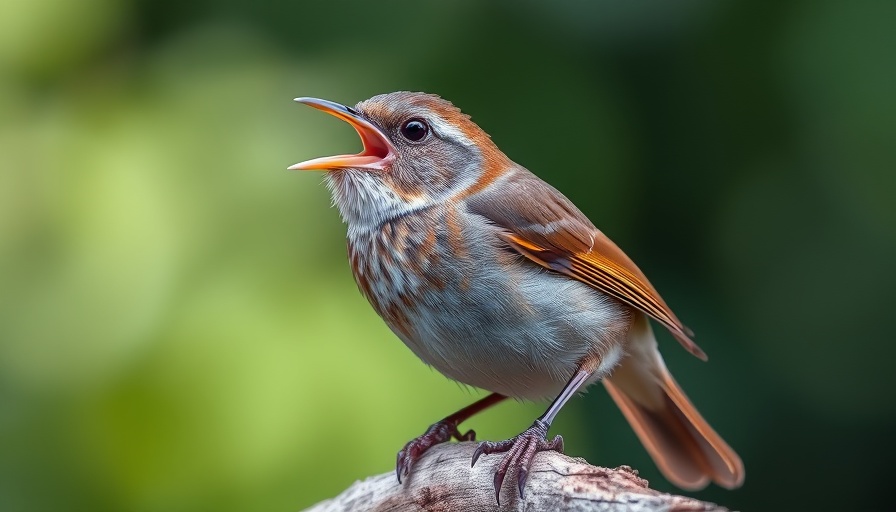
The Serene Beauty of Dawn's Melody
Every year, the first Sunday of May transforms into a global symphony—the International Dawn Chorus Day. This unique celebration invites people around the world to appreciate the extraordinary sounds of birds as they greet the sun. Originating as a modest event in Birmingham, England during the 1980s, it has blossomed into a cherished tradition that highlights the serene beauty of nature.
The Science of the Dawn Chorus
As the sun rises, many birds participate in this natural concert, their songs vibrating through the cool morning air. This phenomenon can often be tied to atmospheric conditions; less turbulence allows bird songs to travel more clearly, making the dawn symphony even more captivating. For bird enthusiasts and casual listeners alike, it’s a chance to connect with their local wildlife and embrace the tranquility that comes with each early morning serenade.
A Call to Action: Join the Celebration
On May 3, 2025, set your alarm early and step outside to experience the magic of the dawn chorus. Whether it's the lively trill of a Eurasian Wren or the melodious call of the American Robin, every song is part of a greater narrative that defines our environment. Don't forget to share your experiences on social media with @BirdNoteRadio, bringing communities together through the joy of nature.
The Significance of Awareness
Engaging with the dawn chorus is not just an auditory delight; it fosters awareness about avian conservation and the health of ecosystems. Understanding the role of birds in our environment reminds us of our own impact on nature. As illustrated by various species participating in this global event, our appreciation can lead to meaningful actions that protect their habitats.
Conclusion: Tune in to Nature
The magic of the International Dawn Chorus Day goes beyond listening—it's about appreciating nature's beauty and encouraging conservation. It's a reminder of the diverse voices that grace our planet while reinforcing our responsibility to protect these avian wonders. As you wake early this May, let the songs of the birds inspire hope and a commitment to bettering our environment.
 Add Row
Add Row  Add
Add 




Write A Comment